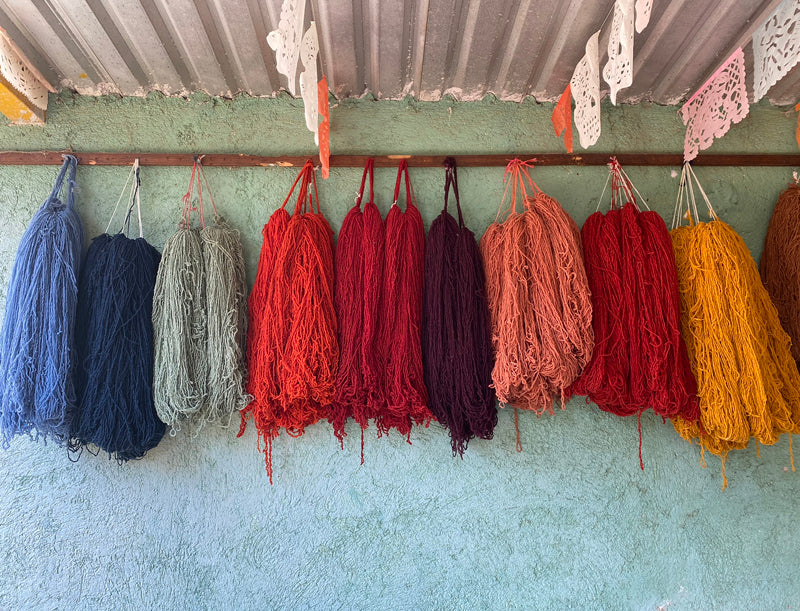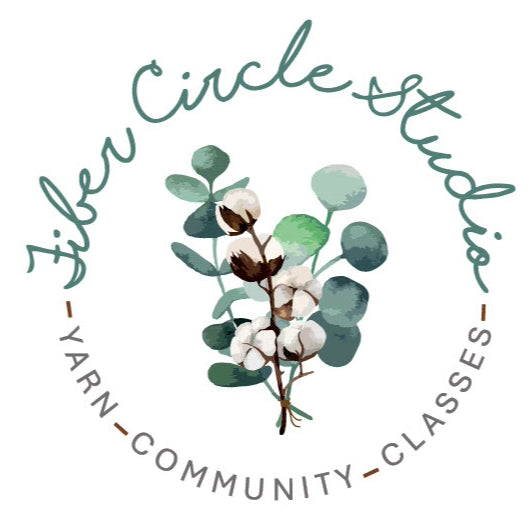
Oaxaca - A World Full of Color!
It's April 12, 2022 (oops, I'm writing this over a year later...) Leland and I said good-bye to Cusco, Peru (where we had just finished another textile tour), hopped on a plane and went straight to Oaxaca, Mexico. As we settled into our van that would take us to our hotel, I shared with him that this town is in his blood, where his father was born and lived the first part of his life until he came to The States around Leland's age. He had been told this before, but I imagine having your feet on the ground in a place that is part of your close ancestry has a different feeling.
I felt the frog in my throat. This was the first time I had been to Oaxaca on my own, without his dad. We had visited a few times before to see his family and I found myself flooded with memories of a time when things were sweeter between us. We had now been divorced for a couple of years and though I was grateful for the change in my life, I still felt the sadness of the loss. All while also feeling grateful for getting to bring my child here to connect with his heritage through my lens - textiles.
E X P L O R I N G E L C E N T R O

We flew in a few days before our textile workshop began. We met up with my best friend, and we spent a few days exploring el centro! We ate lots of delicious food including helado, of course, took in all the street art and wandered the various mercados. We also stopped in at the Museo Textile de Oaxaca to see their current textile exhibit (see eco printing photo in the photo on the far right below).

M I T L A
The first day of our group, textile itinerary, we ventured out to Mitla, an arachaelogical site of the Zapotec underworld where the structures still had original symbology, to get a little bit of history and inspiration for our weaving project that we'd embark on in a few days!

B A C K S T R A P W E A V I N G
After a delicious lunch on the upper patio of a local restaurant just outside of the ruins, we headed to a weaving workshop space where we watched the family demonstrate their backstrap weaving, and learned about some of the symbols they use in their weavings and why they're important. The current project was heavily focused on corn, maize!

N A T U R A L D Y E I N G
with Vida Nueva and Maestra Pastora

A big part of traditional Zapotec weavings starts with natural dyeing. Oaxaca does not have a lot of fiber livestock, so they are often importing their wool yarn and then beginning their processing at the dyeing stage. They grow and collect their dye materials and dye large batches of various colored wool yarn!
The leader of the Vida Nueva Collection, Pastora, welcomed us to an outdoor, private space for gathering where we nestled under the trees on a hot day, listening to the cicadas. She shared the moving story of how the collective was started and the process and growth over the years. The collective was initiated to mainly support single women (whether divorced, widowed, or simply still single) through their textile work.
We then went and visited the famous Árbol de Tule - a tree that is estimated to be around 1500 years old and a trunk circumference of over 130 feet, and another collective Texere which supports textile residency's.

Now, it was time to immerse ourselves in natural dyeing! Pastora put together 4 dye pots for us to dye in. Unfortunately much time has past since this trip and I can't remember all of the dyes. We definitely had an indigo, cochineal and walnut pot, but I can't remember the other - it produced a yellow dye but it wasn't marigolds... And then when we were done with one, we added lime to change the ph and therefore shifted color! She shared a thorough demonstration on the natural dyes (including using Leland as a canvas for showing how they mix dyes to create different colors such as green!) and how they're used, as well as showed samples of how the colors were incorporated into various designs.
With our weaving workshop beginning the next day and now inspired by natural color, we were encouraged to begin sketching the design for our own weaving pattern.

F L O O R L O O M W E A V I N G
with Susi, Pancho y sus familia
We walked into the home of Susi and Pancho where they weave rugs for a living alongside their children. Every room was filled with weavings hanging on the wall and looms nestled into every corner. Pancho gave us a demonstration of how the loom worked, and we then wandered to select a loom and begin our project! We brought a selection of colorful yarns chosen from Pastora's collection along with our drawing. We were given guidance to get started and then off and away we went!

While the backstrap loom is the traditional style of weaving, the floor loom is a result of Spanish influence and is a large castle, stand up loom with 2 harnesses and 2 foot treadles. Open the shed, run your weft thread through, change sheds and beat. Repeat. Building your color based on your design became the most complicated part along with maintaining smooth selvages (despite the use of a temple). We created weft-faced weavings, meaning that the warp (vertical white strands attached to the loom) are completed covered by the weft (design) yarns.
We worked hard bringing our designs to life and by the end of our weaving sessions, so many particpants had beautiful completed pieces! Some to be sewn into bags and pillows, and others to be left as rugs.

I'm intently focused on the last day of weaving, realizing I may not finish my weaving on time. when I hear Leland excitedly skipping over and saying "Mommy, mommy!! I'm done I'm done!!" And these photos capture his joy of this weaving experience.

T H E H E A T - T E M E S C A L
We walk through beautiful gardens and approach a half dome made with rocks and clay, and a firepit. We are encouraged to wander the gardens and pick 3 plants that speak to us. We are instructed to walk silently, with a free, open mind for our soul knows which plant it needs as medicine. As we return, we form a circle and offer our plants to the circle with a center and four quadrants - an important ritual before entering the temescal. They gave us a rope, and asked us to tie a knot for everything that comes up as a sticking point. I'm focusing on tying all my knots ... noticing them stacking up when I look over at Leland's that only has 3. I found myself with a mixture of happiness and pain. How beautiful to only have 3 knots, but the idea of MY child having any knots at all brought me sadness.

We enter the temescal, the heat already present. The fabric door falls to block the light and any new air from entereing. The fire heated rocks are doused with water, and the steam immediately penetrates your lungs and skin. The next two hours, we move through the different elements - water, air, earth and fire. Each element accompanied by a special song and ritual, and a breath of fresh air wooshes in as the fabric door is opened to bring in more smoldering rocks. Halfway through, feelings of dizziness and lethargy envelop you, the effort to deeply breathe increasing. By the last element, fire, I lay on the floor of the temescal with my feet up against the wall. My body is dripping with sweat and steam and I imagine my own knots trying to melt away. To be lying in a hot, tiny, earthen room with other women, and the indigenous leaders felt so powerful. It was time to shed those deep wounds that I was choosing to still carry.
As we each exited the temescal, the bright light of the sun was blinding, and we shouted "Estoy Vivo!" "I am alive!" Water was then poured over our heads and down our body to shock us back into our bodies. I choked on the water. It felt like I had been "born again", but with more consciousness, wisdom, and intention. And not for God, or anybody. It was for me, my soul, and my connection to the earth.
H I E R V E E L A G U A

The natural boiling waters. I've been wanting to go for almost a decade! Pools of natural, travertine springs and the illusion of a cascading waterfall that is in fact a build up of minerals.

L A S M U J E R E S D E L B A R R O R O J O
with Macrina Mateo Martinez
Las Mujeres del barro rojo is a group of women who work with and create ceramic pieces to sell out of the local red clay. Every year, the women ascend a local mountain to the site where they mine the clay. The location is not accessible by vehicle, so they must do this by foot where they carry their clay haul back down to their studio on their backs in cloth bags.

E L G R U P O
Over the course of our 9 day trip, the group developed new friendships and by the end we began to feel like family! Watching people learn, grow and appreciate new (to them) forms of creativity was such a beautiful process, in addition to seeing the interactions they each had with Leland! Another trip leaving with me a full heart!!

